Do you have trouble coming up with snack ideas for your kids? Or do you question if you should even be giving your child snacks?
I’ve heard parents and medical providers share the advice, “…only give kids fruits and veggies at snacks.” They suggest limiting snacks or say kids shouldn’t have them at all.
There are a variety of reasons folks recommend limiting or eliminating snacks:
- they’ll eat better at meals
- traditional “snack” foods are unhealthy
- it will help them lose weight
- it will make them eat more produce
- snacks aren’t really necessary
While there might be good intention behind this advice, it’s not appropriate, and it’s potentially harmful.
Snacks are an important part of your child’s diet
Children generally need snacks to thrive, and this is not just a “want”. Their tummies are smaller and hold less food at once, and they have fast metabolisms.
Now, if you offer a snack and your child doesn’t take it, don’t force them to eat it.
However, in general, kids tend to eat little amounts at a time and they need to eat consistently to maintain their blood sugar and take in enough nutrients for a day.
When children are restricted at snacks:
- They eat past fullness in fear of not being able to eat again for a while.
- If only produce is offered, they may become resentful of fruits and veggies.
- If they’re hungry or feel deprived, they’ll sneak or hide food between meals.
- They’ll be overly hungry at meals and eat fast or more than they need.
Children are growing, they need substantial food consistently throughout the day!
These are some of the snacks we’ve had recently!
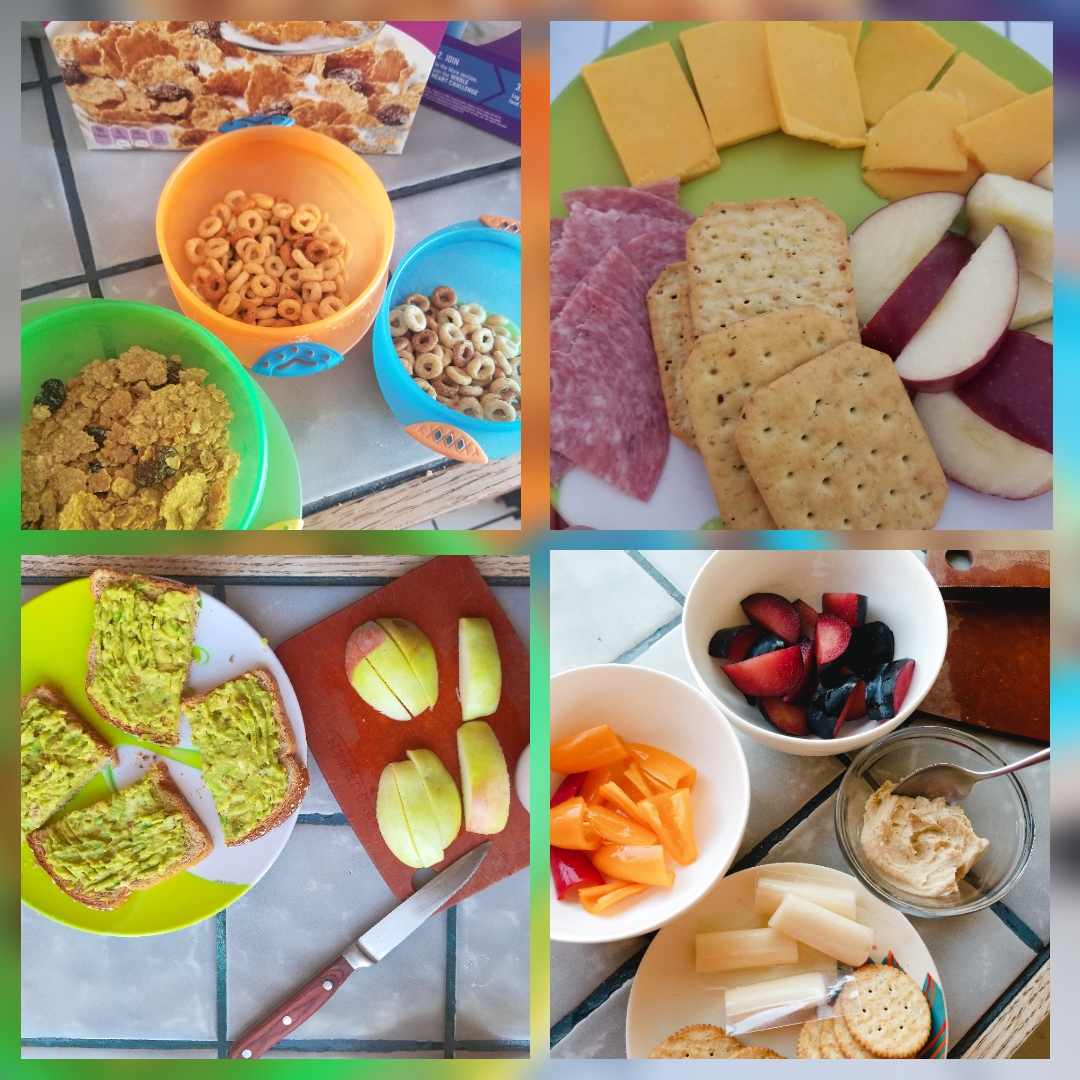
Use this basic structure for snacks
Try to think of snacks as mini-meals. You want them to contain the basic nutrients so they’re satisfying and provide nutrition. Snacks are also a great opportunity to try different foods. I often find my kids will eat different foods at snacks than meals, especially veggies.
At a minimum, aim for these 3 things –>
- grain
- protein and/or fat
- produce
Don’t worry if your structure’s not “perfect” every time. You might have 2 things in one category, such as apples and berries or chips and pretzels. You may only offer a grain and protein, such as crackers and cheese.
It’s ideal to offer a variety of nutrients and various foods to expose your child to new and different foods, but some times snacks need to be fast and convenient.
In order to not interfere with dinner or the next meal, have a snack time, and then put the food away to help prepare your child to be ready to eat again. Children generally need to eat about every 2 to 3 hours.
Snack ideas for kids
- Make your own trail mix. You can make a batch of it or put it out for them to self-serve in a muffin pan. Ideas: cereal, small crackers, dried fruit, nuts/seeds, chocolate chips, mini marshmallows.
- Cereal, milk, and fruit.
- Cheese, crackers, lunch meat, and veggies.
- Crackers, veggies, and hummus.
- Fruit and pretzels with dips: yogurt, nut butter, melted chocolate.
- Different toasts: avocado, nut butter, hummus and fruit/veggies.
- Bagels with cream cheese and fruit/veggies.
- Cut up mini sandwiches and fruit/veggies.
- Tuna or chicken salad, crackers, and fruit/veggies.
- Chips with dips: guacamole, bean and cheese, queso and fruit/veggies.
- Smoothies: yogurt, peanut butter, avocado, frozen fruit, veggies (spinach and butternut squash are my fav’s)!
- Quesadillas (cheese, beans, or chicken), and fruit/veggies.
- English muffin pizzas, and fruit/veggies.
- Eggs (scrambled or hard-boiled), crackers, and fruit/veggies.
- Leftovers from another meal!
Treat snacks as part of their intake, not an extra, or something you’re trying to limit. Try to see them as opportunities for nutrition to help support their growing bodies!
- For more on how to create structure, less-stress, and more joy when it comes to feeding your family, grab my Stress-Free Family Eating Workshop.
- And check out the recipe Easy and Delicious Yogurt Bark for another new idea!


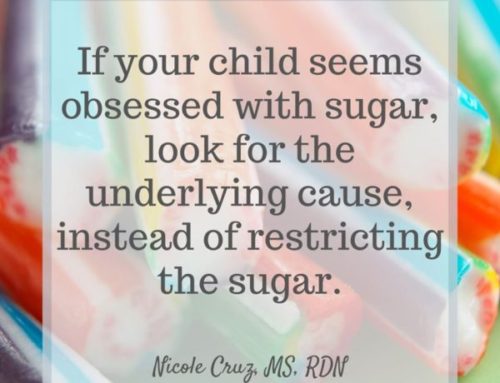
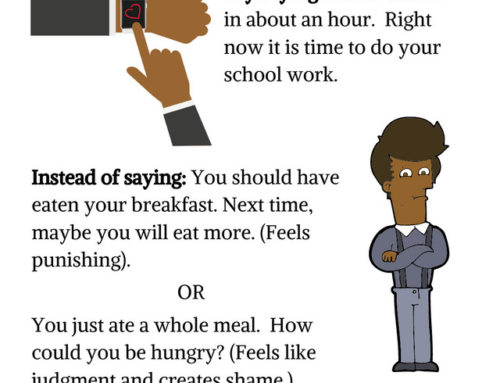

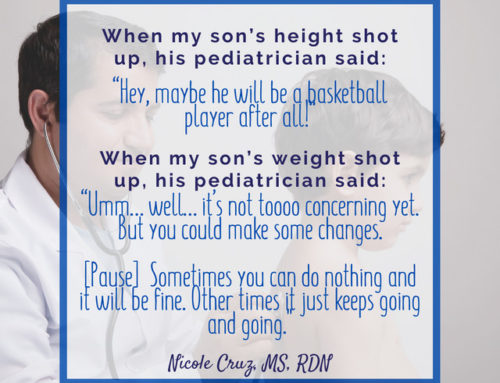
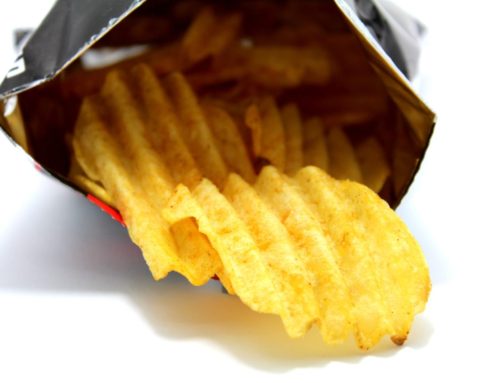
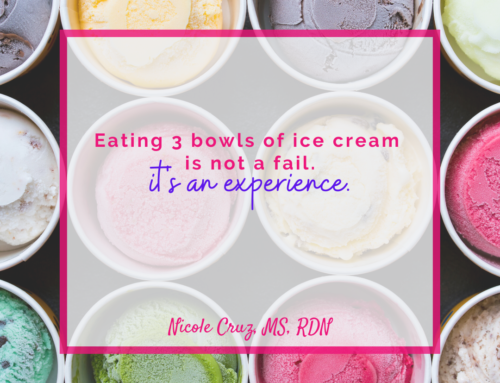
Leave A Comment